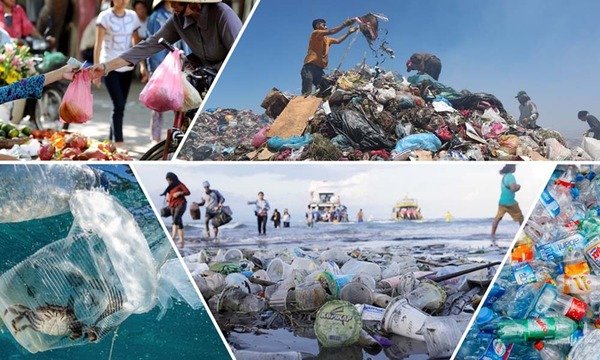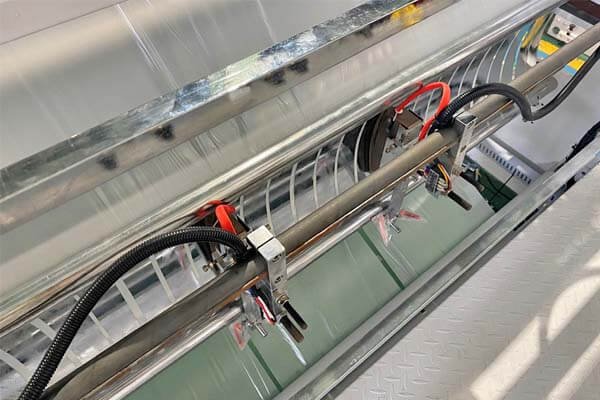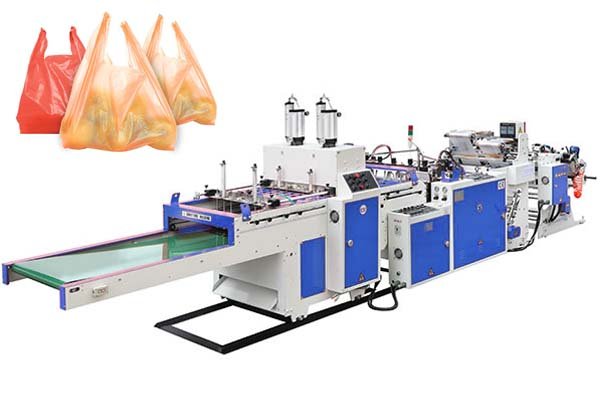
Plastic grocery bags often end up in recycling bins1 despite being unsuitable for standard curbside recycling systems. Their inclusion causes significant operational issues at recycling facilities and compromises the quality of other recyclables.
The primary issue with recycling plastic grocery bags is their tendency to wrap around the rotating machinery at Material Recovery Facilities (MRFs)2, leading to equipment jams3, facility shutdowns, and contamination of recyclable materials.
How Plastic Bags Affect Recycling Machinery
Plastic bags are lightweight and flexible, which makes them incompatible with automated recycling equipment. Rather than following the intended sorting paths4, they get entangled in the rotating shafts, screens, and gears of sorting machines. This results in mechanical failures, overheating, and forced shutdowns, requiring manual removal by workers.

Sorting System Challenges
MRFs use rotating screens—such as trommels or disc screens—to separate materials by size and shape. The process distinguishes between:
- 2D items (e.g., paper): Meant to travel across the surface of screens.
- 3D items (e.g., bottles, cans): Designed to fall through screen gaps.
Plastic bags do not behave predictably in this system. While flat like paper, they are too light and pliable, allowing airflow and mechanical movement to pull them into machinery components, where they tangle and obstruct movement.
| Material | Intended Sorting Path | Disruption Caused by Plastic Bags |
|---|---|---|
| Cardboard | Travels over screens to the paper sorting line | Can be pulled into the container stream |
| Plastic Bottles | Falls through screen gaps | Can be trapped by entangled plastic film |
| Aluminum Cans | Sorted by eddy current separators | Can be blocked or misdirected due to bag tangling |
| Plastic Bags | Not meant to enter the system | Wraps around components and causes equipment jams |
Operational Impacts
- Emergency Shutdowns: A single plastic bag can trigger stoppages across the sorting line.
- Manual Removal: Staff must climb onto machinery using safety gear to cut away tangled film with utility knives—a hazardous and labor-intensive task.
- Equipment Wear: Repeated jams increase mechanical stress, leading to premature failures and costly maintenance.
Why Plastic Bags Are Not Suitable for Curbside Recycling
Curbside recycling systems are optimized for rigid materials like bottles and cans. Plastic bags and other film plastics disrupt this system and reduce the quality of recyclable outputs.
Curbside programs are not designed to handle plastic film. Bags bypass sorting systems, damage machinery, and cause contamination of otherwise recyclable materials.
Contamination Issues
Plastic bags are a common source of contamination, especially for paper:
- Pulping Process: Paper is turned into pulp using water and chemicals. Plastic does not break down and creates "stickies"—small clumps that affect paper quality.
- Rejected Shipments: Excessive contamination leads paper mills to reject entire bales, sending valuable material to landfills instead.
Mis-Sorting Risks
Plastic bags are often misclassified by optical and airflow sorting systems. Their light weight and shape can cause:
- Bags to be blown into incorrect streams.
- Optical sorters to misidentify bags filled with other recyclables.
| Item Category | Acceptable in Curbside Bin | Why It Works | Not Acceptable | Why It Fails |
|---|---|---|---|---|
| Plastics | Bottles, jugs, tubs (#1, #2, #5) | Rigid shape allows proper sorting | Plastic bags, wrap | Tangles in machinery |
| Paper | Newspaper, cardboard, mail | Flattens and moves predictably | Soiled/greasy paper | Contaminates paper pulp |
| Metal | Aluminum & steel cans | Sorted via magnets and eddy currents | Wire, hangers, scrap | Wraps around components |
Correct Way to Recycle Plastic Grocery Bags
Plastic grocery bags should not be placed in curbside bins. Instead, they should be collected and returned to designated store drop-off locations5.
Proper recycling of plastic grocery bags6 involves returning them to retail drop-off bins, commonly located at grocery or big-box stores.
Store Drop-Off System
This system separates plastic film from mixed recyclables:
- Collection: Consumers collect clean and dry plastic film at home.
- Drop-Off: Items are placed in designated bins at retail stores.
- Bundling: Retailers consolidate film into bales.
- Specialized Processing: Bales are sent to facilities that handle polyethylene (PE) film.
- New Products: Recycled plastic becomes material for decking, benches, or new bags.
Accepted vs. Unaccepted Film Items
| Accepted Items (Clean & Dry) | Unacceptable Items |
|---|---|
| Grocery and retail bags | Chip bags, candy wrappers |
| Bread and newspaper bags | Salad bags, frozen food packaging |
| Dry-cleaning bags | Pet food bags, compostable bags |
| Reclosable food bags (clean) | Items with food residue |
| Bubble wrap and air pillows (popped) | Multi-layer laminated pouches |
| Plastic shipping envelopes (labels off) | Metallized or black plastic |
Visit plasticfilmrecycling.org for local drop-off sites.
Impact of Bag Design on Recyclability
Plastic bag design directly influences how easily the material can be recycled.
Designing bags with mono-materials7 (e.g., HDPE or LDPE), avoiding certain pigments, and limiting additives improves their recyclability.
Material Composition
| Bag Type | Material Example | Recyclability | Reason |
|---|---|---|---|
| T-Shirt Bag | Mono-material (HDPE) | High (store drop-off) | Single polymer is easy to process |
| Bread Bag | Mono-material (LDPE) | High (store drop-off) | Clean LDPE can be reprocessed |
| Laminated Pouch | Multi-layer (PET/PE/EVOH) | Very Low | Layers are fused and cannot be separated |
| Chip Bag | Metallized film | None | Metalized layer interferes with processing |
Additional Design Factors
- Color: Optical sorters use infrared light; black plastic is often undetectable, reducing recyclability.
- Recycled Content: Machines must accommodate variability in post-consumer recycled (PCR) materials. Advanced tension control systems help stabilize production.
- Material Innovation: Engineering advances allow production with biodegradable films8 or high-PCR content, aligning with sustainability goals.
Conclusion
The main challenge with plastic grocery bag recycling is their incompatibility with standard recycling equipment, leading to mechanical jams and contamination. Effective recycling requires two solutions: consumer use of store drop-off programs and manufacturer focus on recyclable, mono-material bag designs.
-
Learn the best practices for using recycling bins to ensure effective waste management and recycling. ↩
-
Explore how MRFs operate and their role in the recycling process to better understand waste management. ↩
-
Discover the common causes of equipment jams in recycling facilities and how to prevent them. ↩
-
Understanding sorting paths can help you comprehend how recyclables are processed and sorted. ↩
-
Find local store drop-off locations for plastic bags to ensure proper recycling. ↩
-
Understanding the environmental effects of plastic grocery bags can help you make informed choices about their use. ↩
-
Learn about the benefits of mono-materials in recycling and their impact on sustainability. ↩
-
Explore the role of biodegradable films in recycling and their environmental implications. ↩






